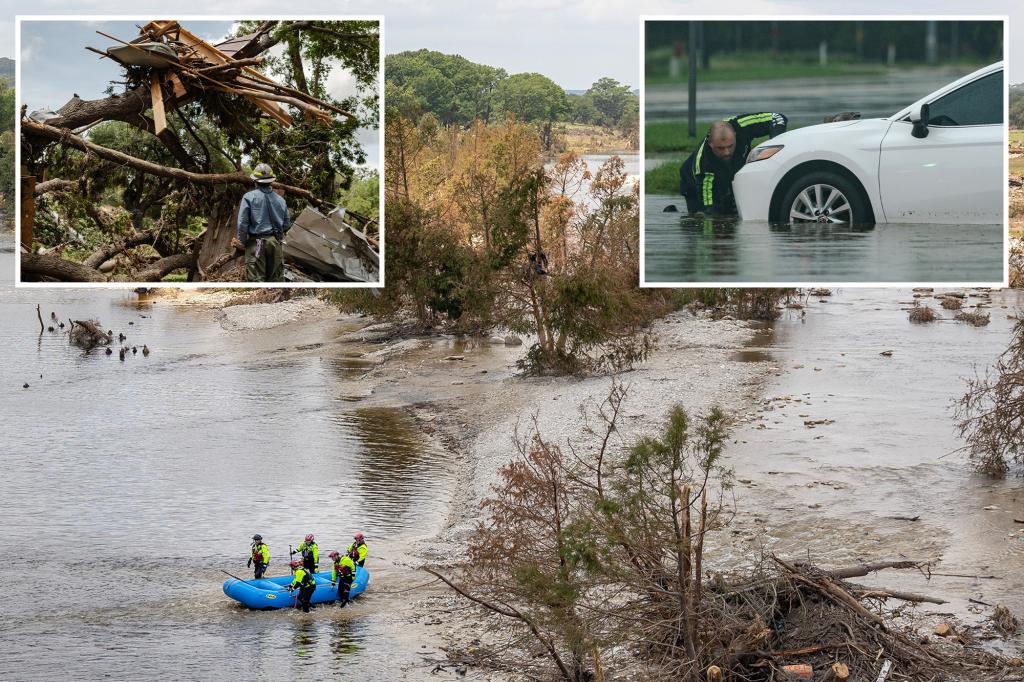Unraveling the Storm: What to Expect from Severe Weather Across the South and Midwest
As severe weather systems loom over the South and Midwest, residents brace for potential disruptions. Meteorologists are tracking these storms closely, providing critical updates on what to anticipate in the coming days. The unpredictability of weather patterns, especially during the transitional seasons, prompts heightened concern among communities. Understanding what to expect and how to prepare can make all the difference in ensuring safety and minimizing damage.
Understanding Severe Weather Patterns
Severe weather in the South and Midwest can manifest in various forms, including thunderstorms, tornadoes, hailstorms, and flash floods. Each of these phenomena presents unique challenges and risks. Meteorologists categorize severe weather based on intensity and impact, with significant attention given to storms that could result in life-threatening conditions.
The dynamics that fuel these storms are often complex. Warm, moist air from the Gulf of Mexico collides with cool, dry air from Canada, creating a volatile environment ripe for storm development. As these air masses interact, they can trigger severe thunderstorms that may spawn tornadoes or produce heavy rainfall.
What to Expect in the Coming Days
The immediate forecast projects a series of severe weather outbreaks across the South and Midwest, with meteorologists predicting:
- Severe Thunderstorms: Expect strong winds, heavy rain, and the potential for hail. These storms can cause localized flooding and power outages.
- Tornado Watches and Warnings: Some areas may experience conditions conducive to tornado formation. Residents should remain vigilant and have a safety plan in place.
- Flash Flooding: With heavy rainfall expected, low-lying areas could see rapid flooding. It’s crucial for residents in these zones to stay updated and avoid driving through flooded roads.
In addition to these severe weather phenomena, there is a risk of downed trees and power lines, which can lead to widespread power outages. Residents are encouraged to prepare emergency kits and stay informed through local news and weather apps.
Preparing for Severe Weather Events
Preparation is key when facing severe weather. Here are some essential steps residents can take to ensure their safety:
- Stay Informed: Monitor local weather forecasts and alerts. Utilize resources like the National Weather Service for real-time updates.
- Emergency Kit: Assemble an emergency kit stocked with water, non-perishable food, a flashlight, batteries, and first aid supplies.
- Shelter Plan: Identify a safe location in your home, such as a basement or interior room, where you can take shelter during severe storms.
- Communication Plan: Establish a communication plan with family members so everyone knows how to reach each other in case of an emergency.
Taking these precautions can significantly reduce the risks associated with severe weather events.
Understanding the Impact on Communities
The repercussions of severe weather extend beyond immediate physical damage. Communities often face long-term challenges following significant weather events. These can include:
- Infrastructure Damage: Roads, bridges, and public utilities frequently suffer damage, leading to costly repairs and prolonged disruptions.
- Economic Consequences: Local businesses may experience revenue losses due to temporary closures and diminished customer traffic.
- Mental Health Effects: The stress and anxiety stemming from severe weather can take a toll on mental health, necessitating resources to support affected individuals.
Community preparedness and resilience become crucial in mitigating these impacts. Local governments and organizations often play a vital role in coordinating response efforts and providing assistance to affected residents.
Looking Ahead: Climate Change and Severe Weather
As we unravel the storm, it’s essential to consider the broader implications of climate change on weather patterns. Research indicates that changing climate conditions contribute to the frequency and intensity of severe weather events. Warmer temperatures can lead to increased moisture in the atmosphere, potentially resulting in more significant rainfall and stronger storms.
Understanding these trends is critical for developing effective strategies for adaptation and resilience. Communities are encouraged to invest in infrastructure improvements, promote sustainable practices, and engage in public education campaigns about climate risks.
Community Initiatives for Preparedness
Many communities across the South and Midwest are taking proactive measures to enhance preparedness for severe weather. Initiatives include:
- Public Workshops: Local governments often host workshops to educate residents about severe weather preparedness and response strategies.
- Emergency Response Drills: Conducting drills can help ensure that residents know how to react during a storm, including evacuation routes and shelter locations.
- Community Networks: Establishing neighborhood networks can facilitate communication and support among residents during emergencies.
Through these initiatives, communities are not only preparing for immediate weather challenges but also fostering a culture of resilience and support.
Conclusion: Weathering the Storm Together
As severe weather systems make their way across the South and Midwest, the importance of preparation and community engagement cannot be overstated. By understanding what to expect and taking proactive measures, residents can enhance their safety and well-being during these tumultuous times. While the storms may bring disruption, they also present an opportunity for communities to come together, support one another, and emerge stronger.
Stay informed, stay prepared, and remember: together, we can weather the storm.
See more Your Daily Weather



